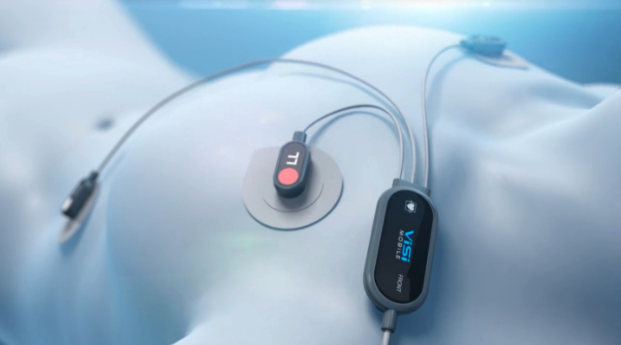ViSi Mobile: Vital Sign Monitoring For Ambulatory Hospital Patients
Over the last decade, there has been a significant emphasis on detecting and responding to unanticipated clinical deterioration in hospitalized patients. Much of this work has been inspired by studies revealing that many deteriorations are not noticed in a timely manner, resulting in unexpected admission to the intensive care unit or cardiac arrest, which could have been avoided had adequate care been initiated sooner.

The Gap: Vital Signs Monitoring
One of the most essential steps to improve patient safety in hospitals is to detect deteriorating patients and respond quickly.
According to research, the current ward-based vital-sign monitoring of patients is time-consuming because, in addition to manual measurement, several processes are involved, such as explaining the process and obtaining consent from patients, documenting vital signs in patient records, and calculating the early warning score, among others. Furthermore, even if the appropriate measurement frequency is obtained, patients may deteriorate between observation sets.
In the 24 hours preceding ICU admission, up to 80% of ward patients exhibit aberrant physiological indicators that are not recognized as deterioration. In the ICU acutely ill patients' vital signs (heart rate, breathing rate, oxygen levels, temperature, and blood pressure) are continuously monitored, however patient monitoring on general care units may produce a large number of false warnings creating an environment that is less than optimal for identifying patient deterioration.. Failure to recognize and address patient deterioration due to alarm fatigue, may result in emergency ICU admissions and higher hospital mortality. The costs are high in terms of patient outcomes, time, and resources.
As a result, there is an unmet clinical need for a robust and dependable system for generating alarms from continuous monitoring of general care hospital patients so that unsuspected deterioration and failure to rescue events don’t occur.
The Aim: Continuous Vital Signs Monitoring For Patient Safety
Continuous monitoring is used in clinical practice but is rarely used in medical-surgical hospital wards; however, it has been proposed that one of the most common reason for the non-use of continuous monitoring systems is the restriction of patient movement, and that, in order to improve therapeutic integration, continuous monitoring should be more comfortable and less restrictive.
Ambulatory monitoring systems (AMSs) may provide an alternative to either intermittent manual vital sign assessment or wired continuous monitoring, allowing patients greater mobility and comfort while providing clinical practitioners with regular vital sign data.
Wireless continuous monitoring of critical vital signs on the other hand has the potential to significantly change this, allowing for early detection of patient deterioration and prompt action by continuously monitoring all vital signs says Beth Mancini Ph.D., R.N., professor, associate dean, and chair for undergraduate nursing programs at the University of Texas at Arlington.
Continuous monitoring systems, which can aid in the detection of emergent problems, are currently exclusively utilized in high-acuity regions of hospitals, such as intensive care units (ICU). Vital signs are routinely taken at four to six-hour intervals in lower acuity regions, which house 60 to 70 percent of hospitalized patients.
The Bridge: ViSi Mobile System as Vital Signs Monitoring System for Ambulatory Hospital Patients
Patient safety is critical for hospitals and healthcare organizations looking to prevent the increased costs associated with unnecessary adverse occurrences. The ViSi Mobile System monitors vital signs 24 hours a day, seven days a week, with the goal of assisting physicians in detecting early indicators of deterioration and allowing clinicians to intervene early to minimize unnecessary escalation of care while also optimizing the use of their time.
The ViSi Mobile System is intended for use in non-ICU ambulatory healthcare settings and consists of a compact gadget, about the size of a sports watch, and comfortable non-invasive sensors that allow for freedom of movement. All key vital indicators (Blood Pressure, Heart Rate / Pulse Rate, 3-lead or 5-lead ECG, SpO2, Respiration Rate, and Skin Temperature) are properly captured and wirelessly transmitted by the device. Other unique sensing technologies of the ViSi Mobile System includes Sotera's patented continuous non-invasive blood pressure (cNIBP), life threatening arrhythmia recognition (V Tach, V Fib, Asystole, A Fib) and patient fall identification and patient posture/activity. Learn more about ViSi Mobile reliability today!

